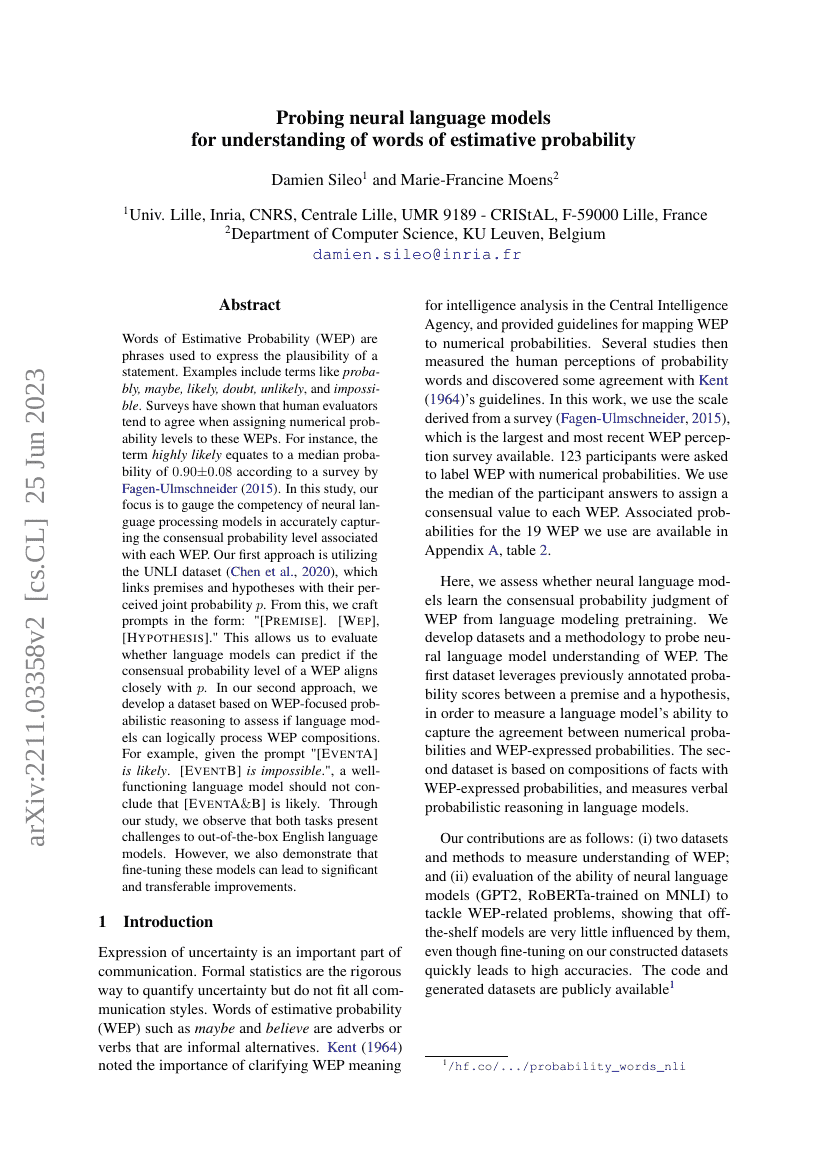Command Palette
Search for a command to run...
Probing neural language models for understanding of words of estimative probability
Damien Sileo Marie-Francine Moens

Abstract
Words of estimative probability (WEP) are expressions of a statement's plausibility (probably, maybe, likely, doubt, likely, unlikely, impossible...). Multiple surveys demonstrate the agreement of human evaluators when assigning numerical probability levels to WEP. For example, highly likely corresponds to a median chance of 0.90+-0.08 in Fagen-Ulmschneider (2015)'s survey. In this work, we measure the ability of neural language processing models to capture the consensual probability level associated to each WEP. Firstly, we use the UNLI dataset (Chen et al., 2020) which associates premises and hypotheses with their perceived joint probability p, to construct prompts, e.g. "[PREMISE]. [WEP], [HYPOTHESIS]." and assess whether language models can predict whether the WEP consensual probability level is close to p. Secondly, we construct a dataset of WEP-based probabilistic reasoning, to test whether language models can reason with WEP compositions. When prompted "[EVENTA] is likely. [EVENTB] is impossible.", a causal language model should not express that [EVENTA&B] is likely. We show that both tasks are unsolved by off-the-shelf English language models, but that fine-tuning leads to transferable improvement.
Benchmarks
| Benchmark | Methodology | Metrics |
|---|---|---|
| natural-language-inference-on-probability | roberta-base-mnli | 1:1 Accuracy: 48.5 |
Build AI with AI
From idea to launch — accelerate your AI development with free AI co-coding, out-of-the-box environment and best price of GPUs.